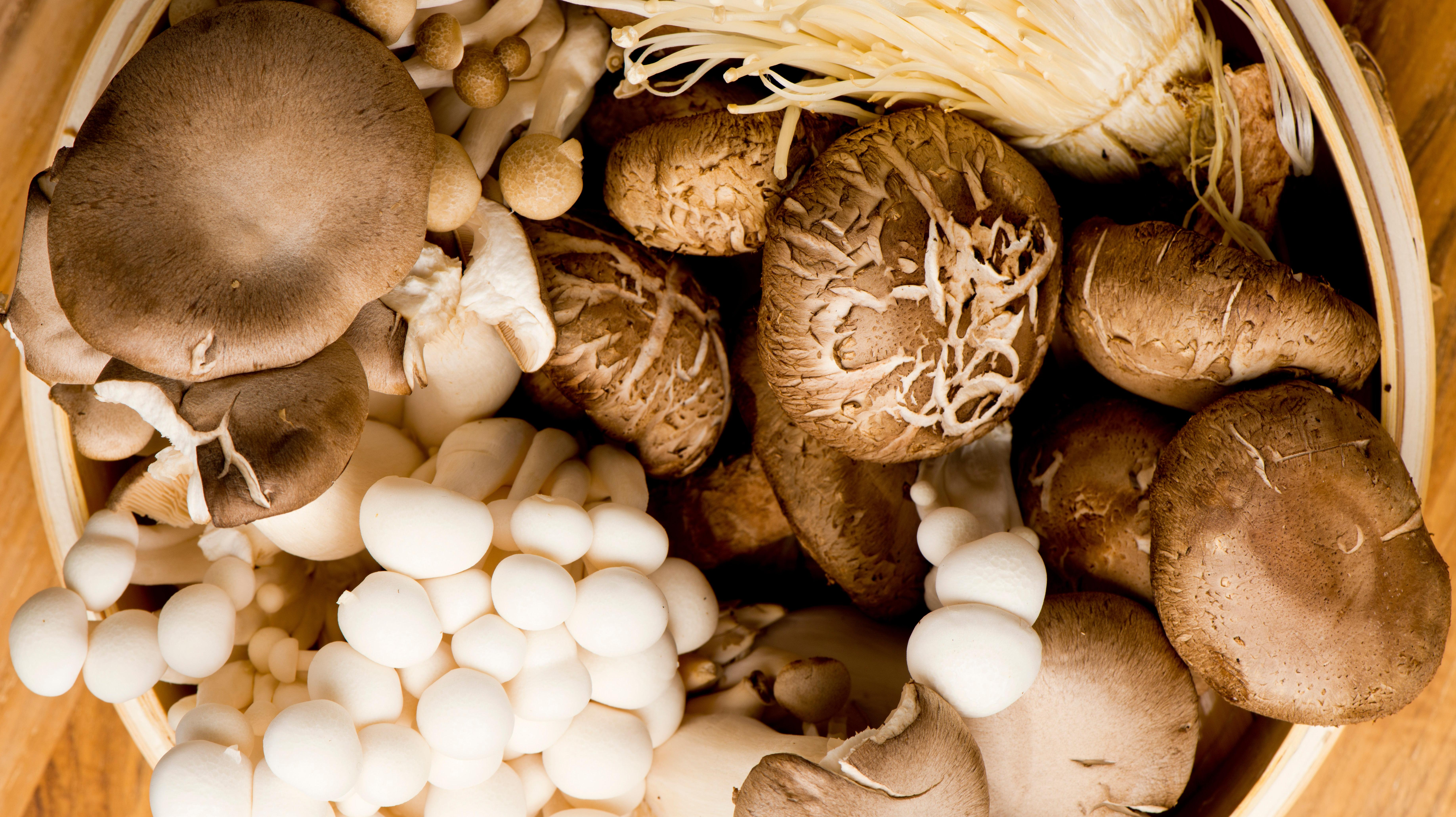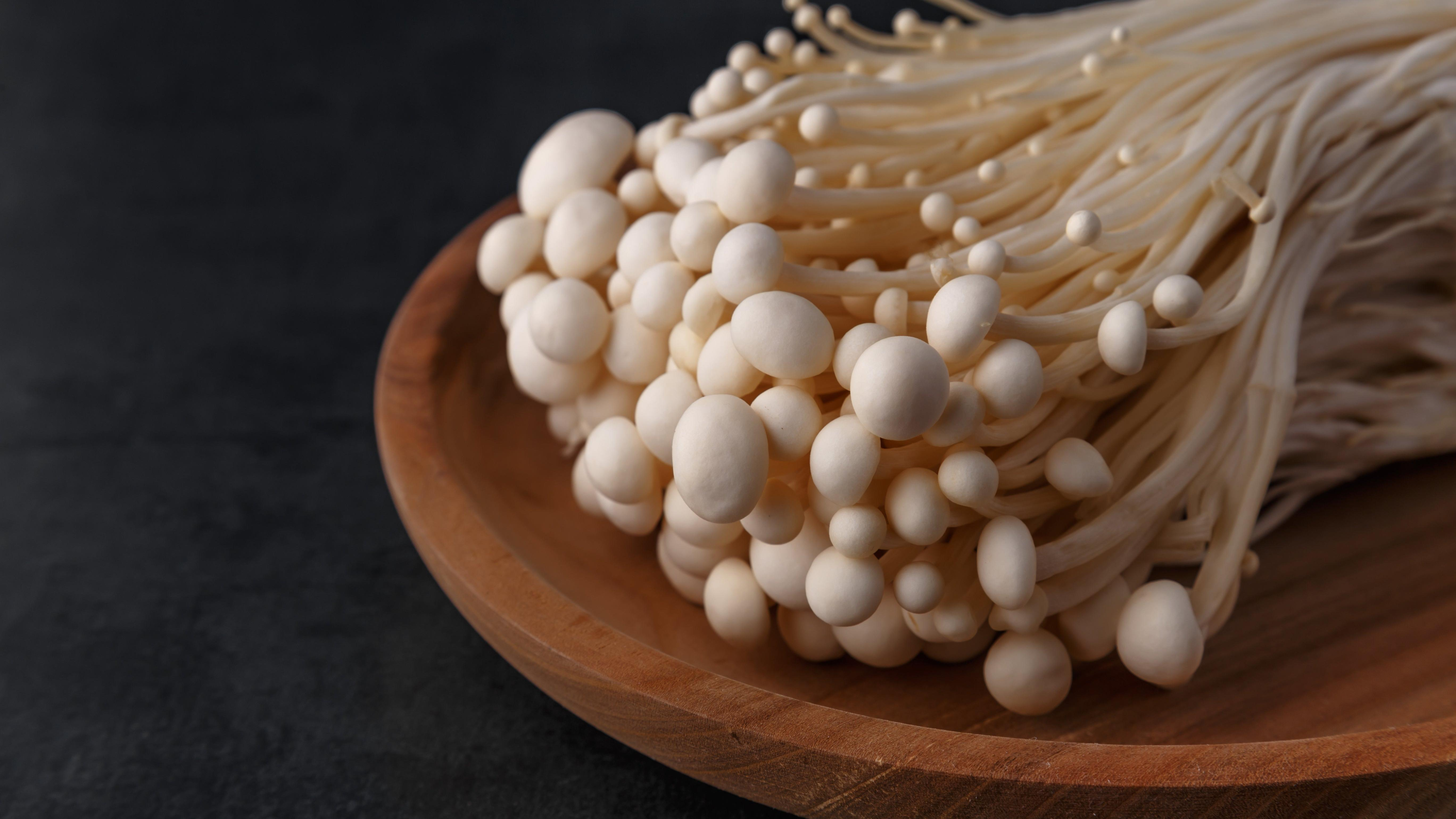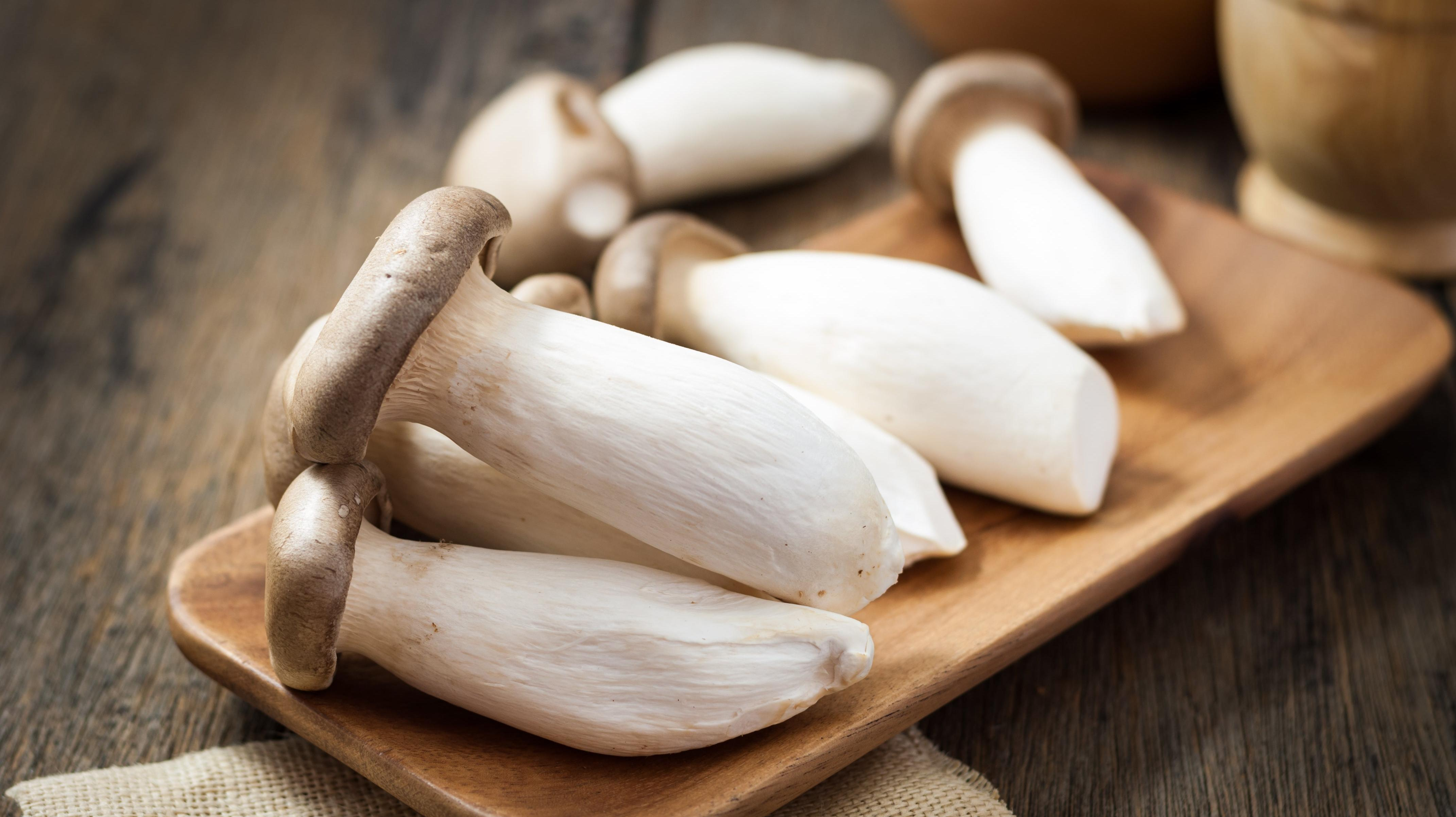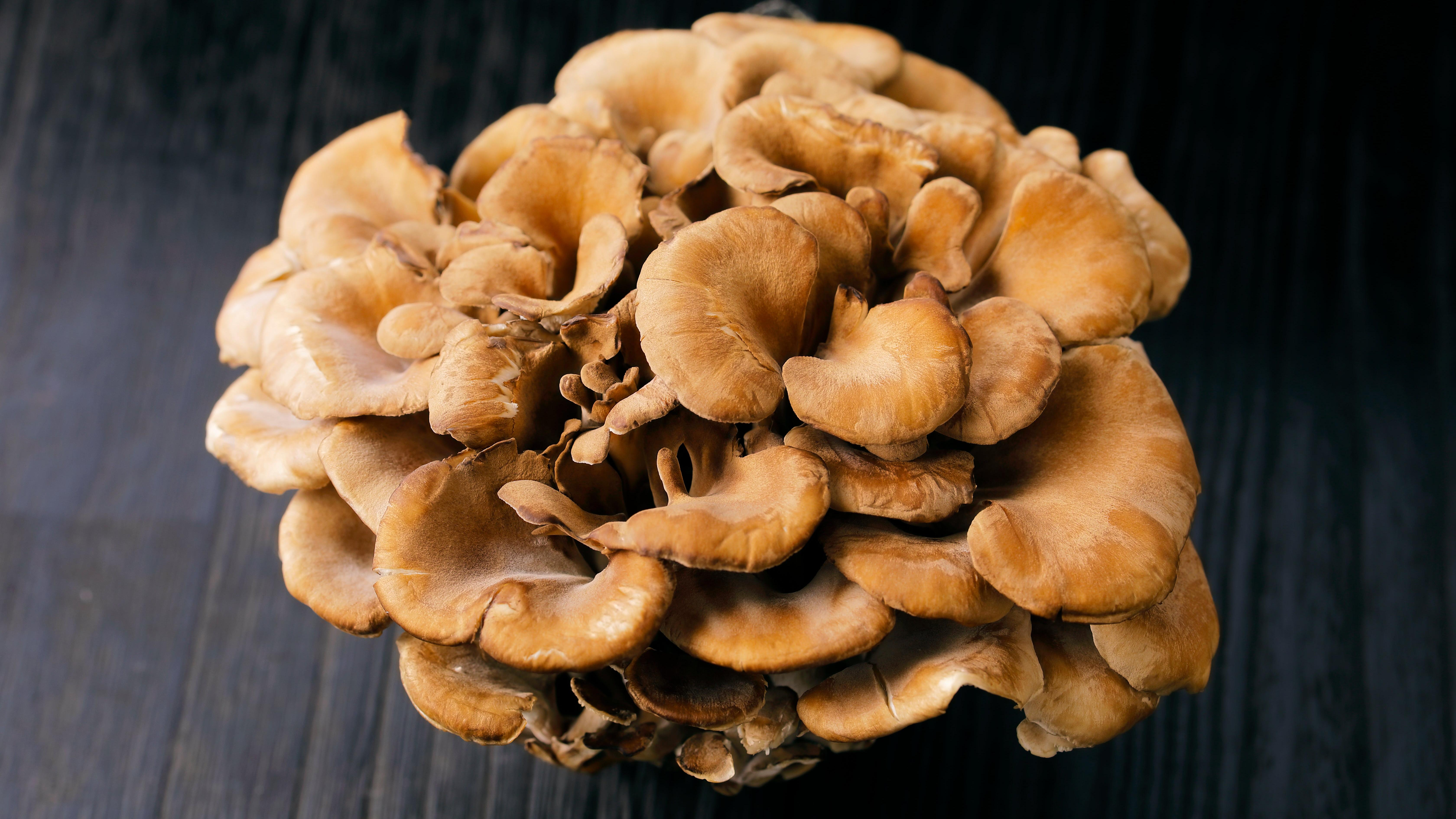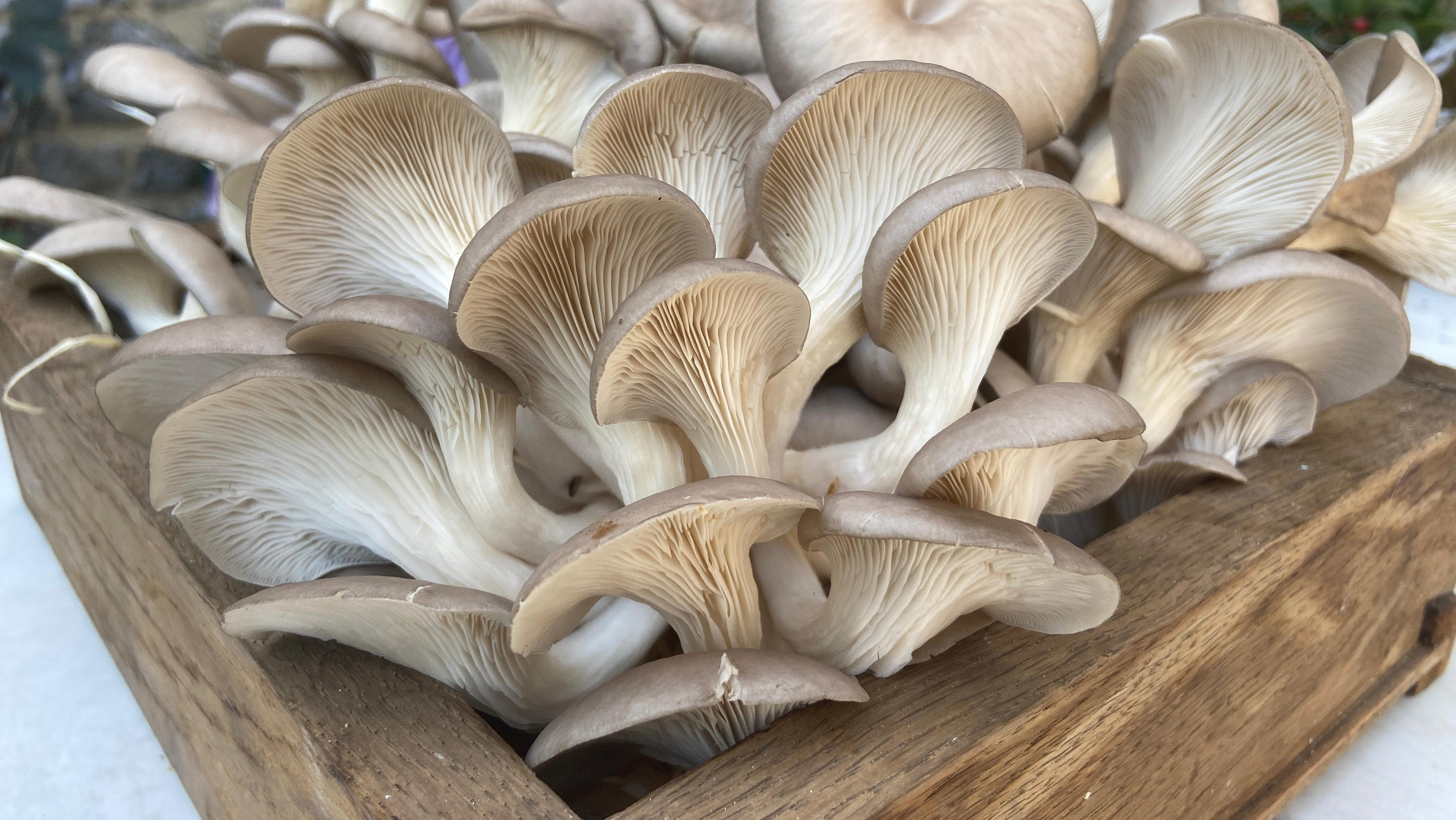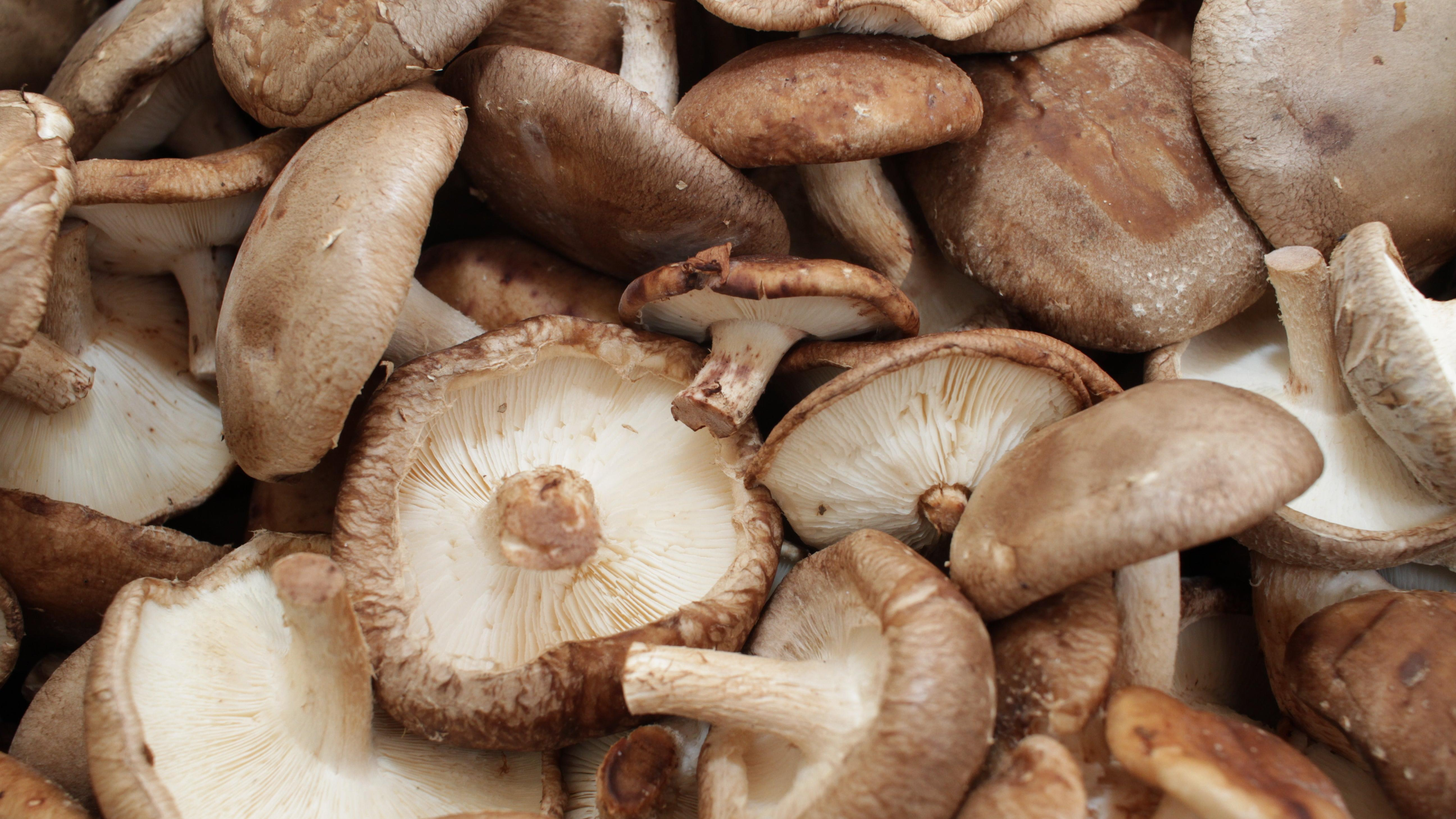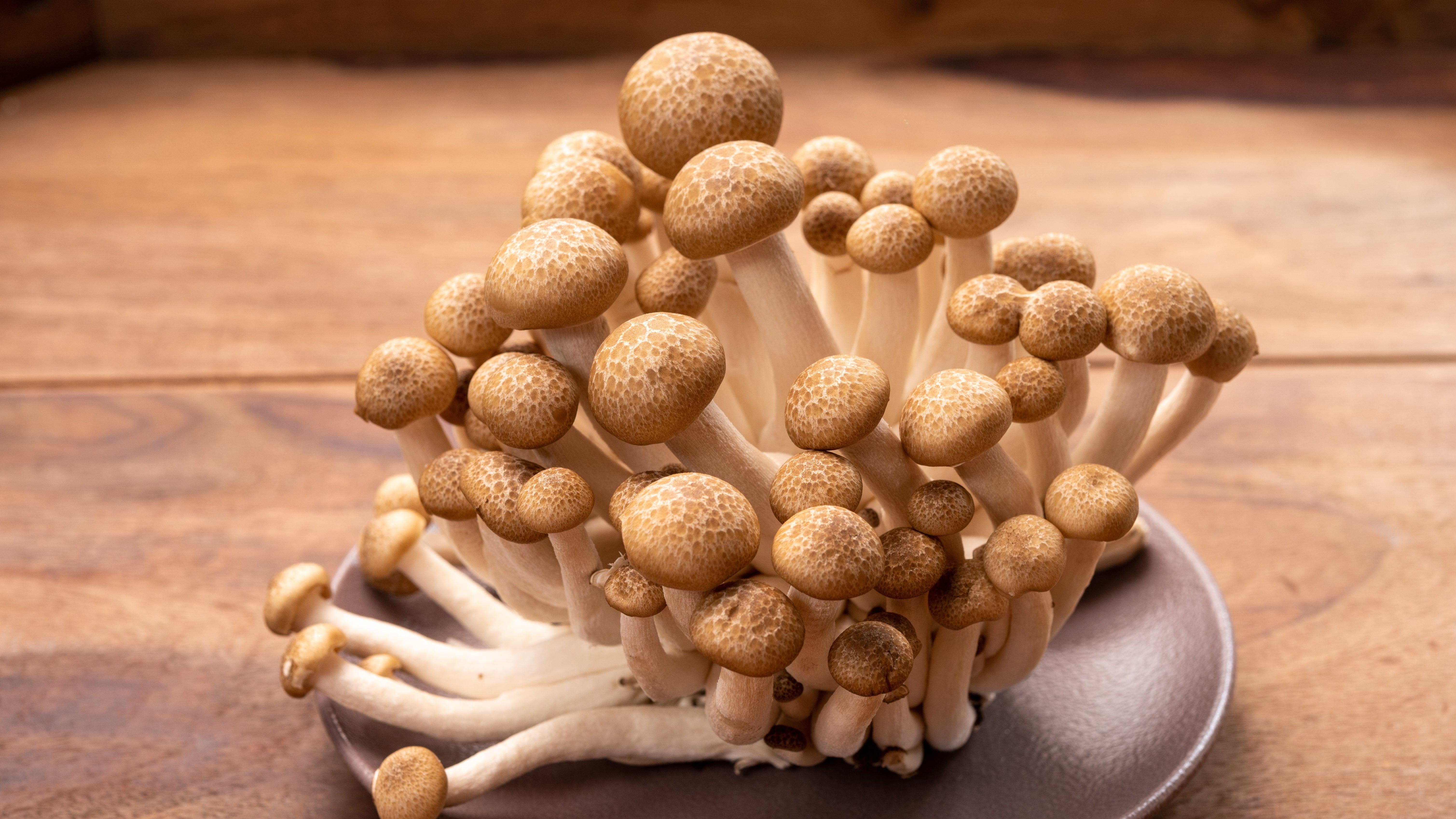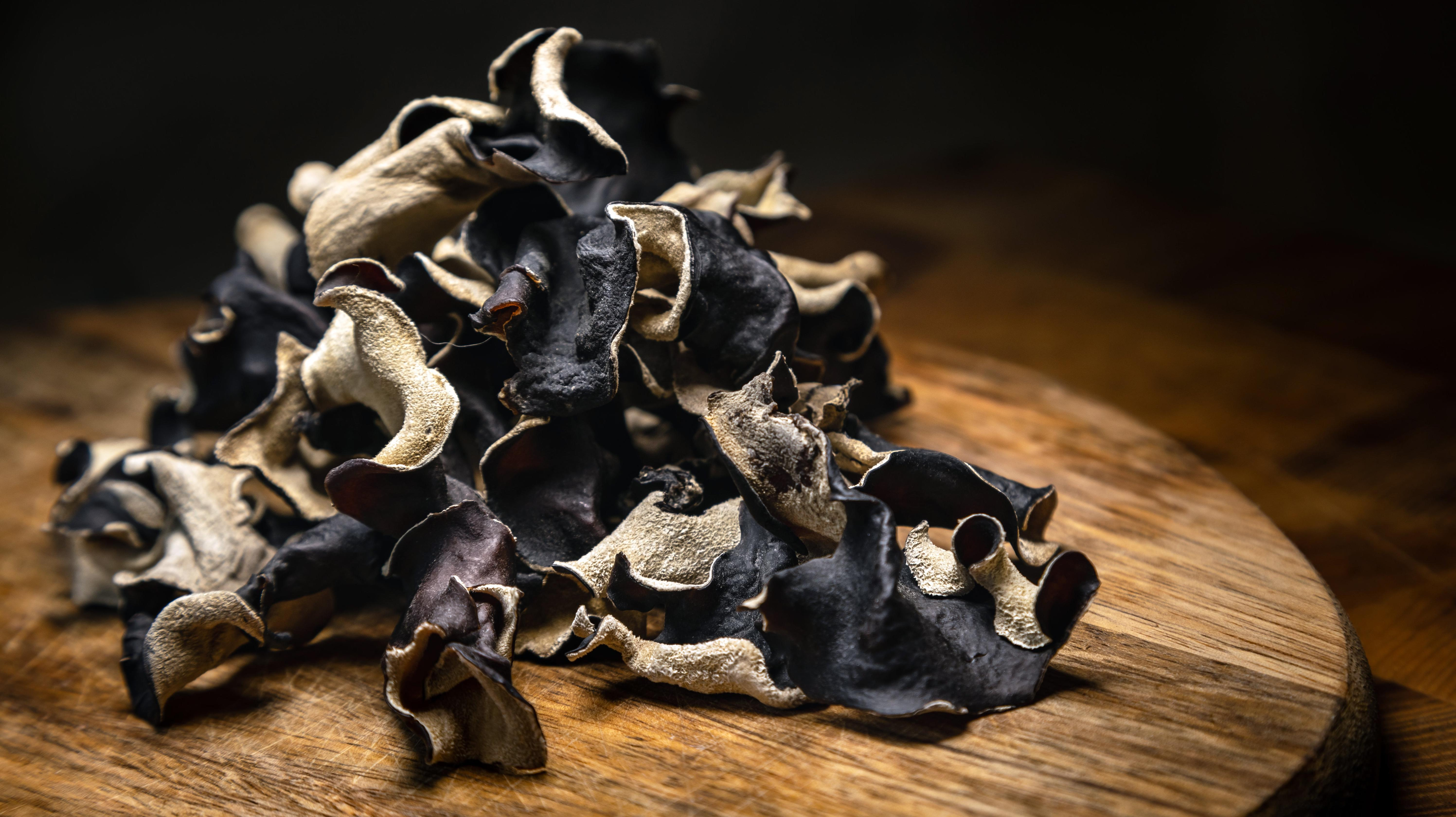7 Must-Buy Mushrooms At Asian Grocery Stores
The best mushrooms are available at your local Korean market. Here's how to use them.
Mushrooms are an essential part of Korean cooking, and though they mostly play a supporting role, they're key to achieving flavor and substance in any dish they're a part of—soups, stews, noodles, and stir-fry dishes all benefit from the magic of mushrooms. While there are a myriad of mushroom varieties in any Korean market, there are seven staples that you'll see time and time again, which we've outlined below. They're easier to cook with than you think, so try incorporating these fungi into your next meal.
Enoki
Enoki are those thin, thread-like mushrooms whose stems look like angel hair pasta. They are a versatile ingredient, as they tend to take on the flavor of the dish in which they're cooked (and aren't super flavorful by themselves). Enoki mushrooms have a somewhat chewy texture and do particularly well in soups and stews, as well as noodle dishes. You can also sauté them or simmer them gently in a seasoned liquid, and eat them as a simple side with some rice.
King oyster
King oyster mushrooms are large, and practically beg to be grilled. You can slice them thinly lengthwise and give them a quick sear, or grill them on each side after you season them. They're the kind of mushroom we'd classify as "meaty," with a rich, savory flavor once cooked. Since they're so substantial, they do well as the main ingredient in side dishes.
Maitake
Maitake mushrooms are some of our favorites. Known as hen-of-the-woods, these mushrooms are not to be confused with chicken of the woods, both of which are mushrooms, neither of which are poultry—we know, it's confusing. Maitakes usually come in one big, frilly mass that should be trimmed at the stem; you can pick or slice them apart into big clumps. How you choose to apply them to a dish is up to you. Simmering them in soup, frying them, and sautéing them all work great, since their bold flavor can pretty much hold up to anything.
Oyster
Oyster mushrooms are named for the shape of their cap, which is oblong like an oyster shell. They have a thin stem and a wide head, unlike king oyster mushrooms, which are the other way around. King oyster and oyster mushrooms are indeed related, though the king variety is larger. Oyster mushrooms are popular all over the world, and they're pretty adaptable to most culinary applications—but they're a sure bet for use in a stir-fry.
Try our Ram-Don recipe, which uses oyster mushrooms and some other simple ingredients to create the dish made popular in the U.S. by the movie Parasite.
Shiitake
Shiitake mushrooms are extremely flavorful and heavily savory, umami at its boldest. They are particularly meaty with a strong aftertaste, and are a delicious addition to stir fries, noodles, soups, and stews. Even by themselves, they taste great simply seasoned with salt and a touch of oil.
While shiitakes are available fresh, you can also find a wide variety of dehydrated shiitake mushrooms in the dry goods section. Once they've been soaked, you can use the mushrooms to flavor soup bases (including the soaking water, but be sure to filter out any grit). The stems can be woody and are generally not eaten, so just trim them off or pluck them out before cooking the caps.
Shimeji
These cartoonish mushrooms (aren't they fun to look at?) are known as shimeji or beech mushrooms, due to the fact that they commonly grow on beech trees. They come in little bundles and should not be eaten raw (they're bitter!), but once cooked, they provide a nice texture and take on an assertive umami flavor that goes well with meat. They can also be used for stir-frys, soups, noodle dishes, or whatever your heart desires.
Wood ear
Wood ear mushrooms aren't particularly flavorful, but they do bring a delightful snappy chew to whichever dishes they grace. They don't get mushy when they're cooked for long durations, so they do well in stir-fries, soups, noodle dishes, and anything you're really looking to add texture to. You'll generally find them in the dried ingredient section, so just make sure to soak and cook them before using, as they aren't meant to be eaten raw.
